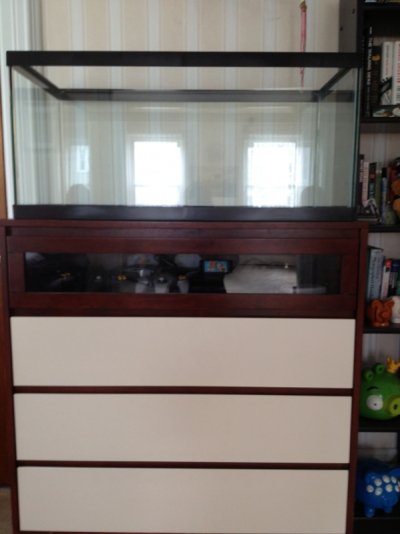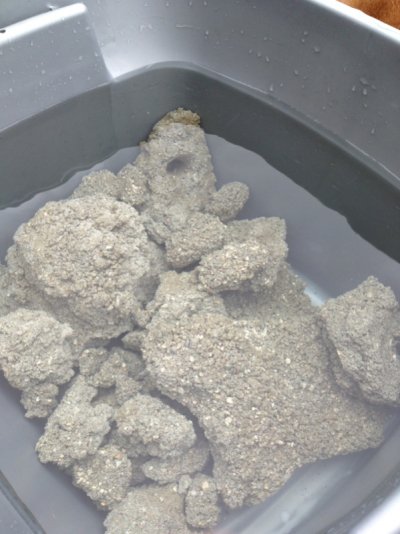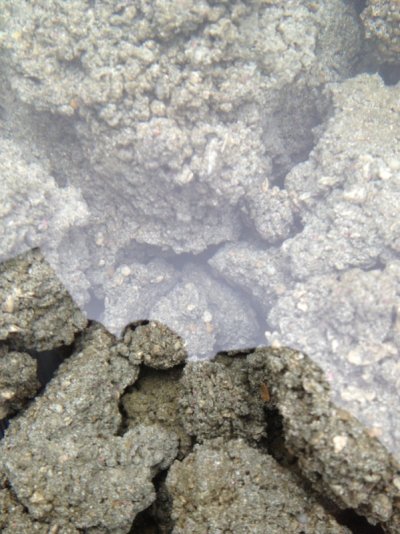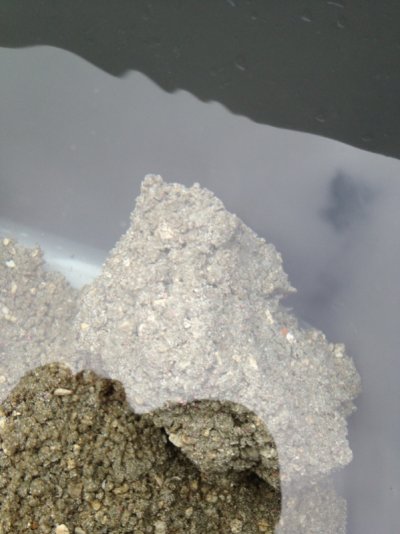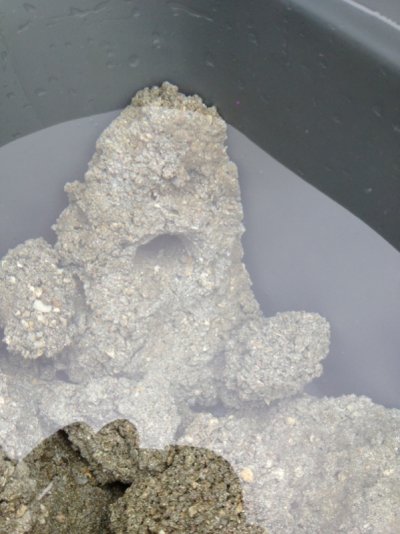Gobyfan
Aquarium Advice Apprentice
So I'm in the midst of putting together a 40 gallon breeder reef tank. Nothing is set up yet, and won't begin to get set up for at least another month or two. So in the meantime while I'm waiting I've decided to go ahead and create my own live rock structures. There are plenty of benefits to creating your own LR just as there are draw backs to it. Before you introduce your structure to a system it is essentially dead rock. You new to give it time to cure, or cycle as most like to say.
Today I went to my lfs (I had to go to quite a few places to find everything) and a couple hardware stores and picked up a bag of Portland cement, aragonite sand, crushed seashell, play Sand and ice melt. I mixed it all together and created my structure and now it is taking 12 hours to dry in the play sand. Once my structure is done drying I will then have to cure it which consists of allowing the structure to soak in a bucket of fresh water so the ice salt that I used can dissolve fully to creat pockets if air between the concrete. These are important for when cycling the rock, it allows many places for the vital bacterias needed to for and colonize which essentially is what turns it from concrete to LR.
Once the salt is fully dissolved the. I will begin the set up for my aquarium. Since I am making my own live rock I will not be using LR to cycle my aquarium system. I'll use Dr. Tim's One & Only Live Nitrifying Bacteria to cycle the tank along with one or two raw shrimp. Once my system is cycled then I will add my LR and allow the rock to cycle in my system for a full month to a month and a half before adding fish.
I'll be keeping this thread updated with my progress. And once I if my structure out I the tub of sand I'll have pictures to post. I'm sure I'll have plenty of questions as I go, an please feel free to ask me any questions you guys have. thanks guys!!!
Today I went to my lfs (I had to go to quite a few places to find everything) and a couple hardware stores and picked up a bag of Portland cement, aragonite sand, crushed seashell, play Sand and ice melt. I mixed it all together and created my structure and now it is taking 12 hours to dry in the play sand. Once my structure is done drying I will then have to cure it which consists of allowing the structure to soak in a bucket of fresh water so the ice salt that I used can dissolve fully to creat pockets if air between the concrete. These are important for when cycling the rock, it allows many places for the vital bacterias needed to for and colonize which essentially is what turns it from concrete to LR.
Once the salt is fully dissolved the. I will begin the set up for my aquarium. Since I am making my own live rock I will not be using LR to cycle my aquarium system. I'll use Dr. Tim's One & Only Live Nitrifying Bacteria to cycle the tank along with one or two raw shrimp. Once my system is cycled then I will add my LR and allow the rock to cycle in my system for a full month to a month and a half before adding fish.
I'll be keeping this thread updated with my progress. And once I if my structure out I the tub of sand I'll have pictures to post. I'm sure I'll have plenty of questions as I go, an please feel free to ask me any questions you guys have. thanks guys!!!

